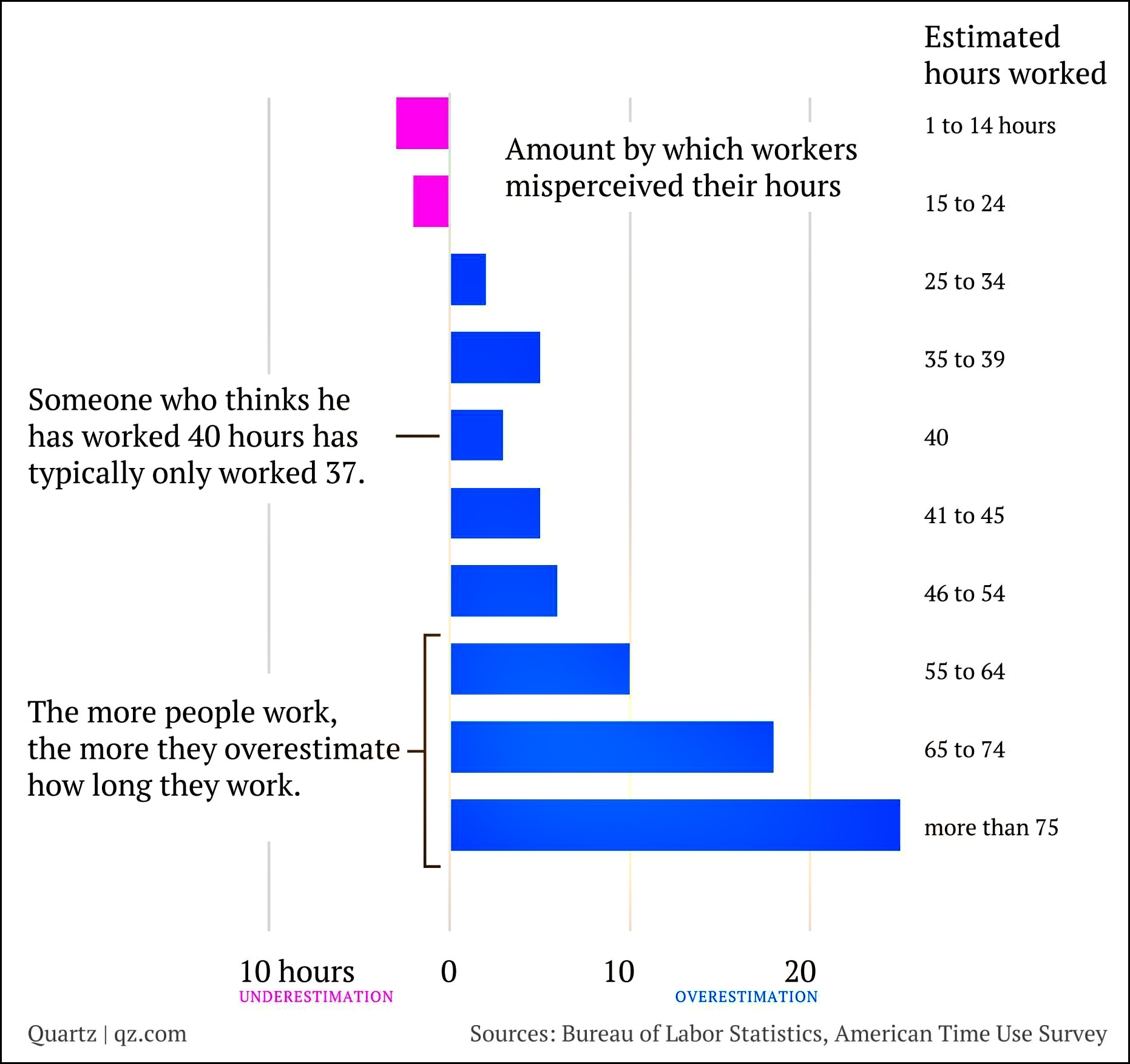
Back when I worked in an office, it seemed like standard practice to claim long working hours. I was always pretty skeptical about that. When I came into the office an hour early, it was a morgue. If I left an hour late, it was a morgue. There just weren’t many people working substantially more than eight hours a day.
Today I ran across an old article on Quartz that confirmed my skepticism. Apparently people routinely exaggerate the number of hours they work:

So if someone says they work 50 hours a week, it’s probably more like 45. And that makes sense to me. I rarely saw people working an extra two hours per day for a full week, but an extra hour? Sure, maybe.
So are people just mistaken about their work hours, or are they lying? My guess is that it’s mostly just misperception. If you’re tired and eager to get home, even an extra half hour can feel like you’re really putting your shoulder to the grindstone. Half an hour at both ends—especially if it means fussing around with childcare and eating schedules—can seem like an ordeal. So it feels like a lot of hours, even if it’s really not that much.
Now, I’m not talking here about the freaks in Silicon Valley or Wall Street with cots in their offices. I just mean ordinary folks. Most of us probably don’t work as much as we think.















